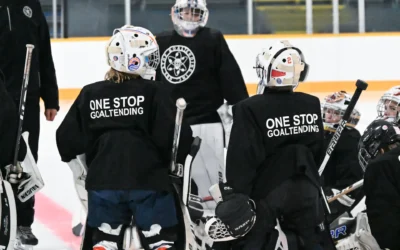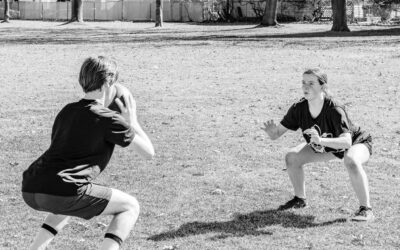We all know the goaltender’s importance to their team’s success, requiring a unique blend of athleticism, agility, and mental fortitude; but excelling in this role requires effective training management. However, like any sport, there’s a fine line between optimal training and overtraining, which can harm performance and long-term health.
The Importance of Proper Training Management
Goalie-specific training goes beyond standard physical conditioning and on-ice training. It includes off-ice agility drills, reaction time exercises, and mental toughness training to enhance decision-making under pressure. An off-season training program should consist of:
- Skill Development: On-ice training, practicing specific techniques such as positioning, angles, skating, and puck handling.
- Physical Conditioning: Off-ice, building strength, agility, and conditioning through tailored workouts that target muscles crucial for quick movements, sustained endurance, and injury prevention. This could also include hand-eye coordination drills, stretching, or yoga. All of which will benefit any goaltender long-term.
- Mental Preparation: Off-ice, exercises like visualization, focus drills, and stress management will help practice habits, and game situations such as bouncing back after a less-than-stellar goal, or maintaining focus during a long penalty kill.
The Pitfalls of Overtraining
While dedication is admirable, overtraining can lead to diminishing returns and increased risk of injury. Goalies are susceptible to overtraining due to the repetitive stress on joints, and muscles, and the intense mental strain of their position. Signs of overtraining include:
- Persistent Fatigue: Feeling constantly tired, both physically and mentally.
- Decreased Performance: Noticing a decline in reaction time, coordination, or overall performance.
- Increased Injury Risk: Muscular strains, joint pain, and even mental burnout.
Listening to Your Body
Knowing when to “listen to your body” is crucial for sustainable performance. Some indicators that it may be time to ease off or take a break:
- Persistent Soreness or Pain: Ignoring lingering pain can lead to more serious injuries and cause issues when the season begins and you are expected to be at your best.
- Mental Exhaustion: Difficulty concentrating, loss of motivation, or mood swings.
- Plateau in Performance: If improvement stagnates despite training efforts, it could be a sign of overtraining.
All of the above-listed items are excellent indicators that it may be time to take some time off or get away from the game. Go hang out at the lake, go camping, hiking, or spend time with your friends and family, and then get back into it after a few days once you’ve recharged. This does not mean sitting in your basement playing video games for a week!!!
Managing Training Load
To optimize performance and prevent overtraining:
- Periodization: Structuring training into cycles of intensity and recovery allows for proper periods of intensity and recovery.
- Rest and Recovery: Incorporating rest days, adequate sleep, and active recovery techniques (like stretching or yoga) into the training plan allows you to get away from the high-intensity or high-concentration days while still benefitting your game.
- Nutrition: Fueling the body with proper nutrients and hydration to support physical demands and recovery is crucial. There are many resources regarding meal plans etc. online and we may have an article in a future newsletter with more in-depth ideas.
Effective training management requires a balanced approach that considers performance’s physical and mental aspects. Recognizing the signs of overtraining and knowing when to prioritize rest and recovery is essential for long-term success and injury prevention. Listening to your body and maintaining a well-rounded training regimen can help a goalie achieve peak performance while ensuring longevity.


